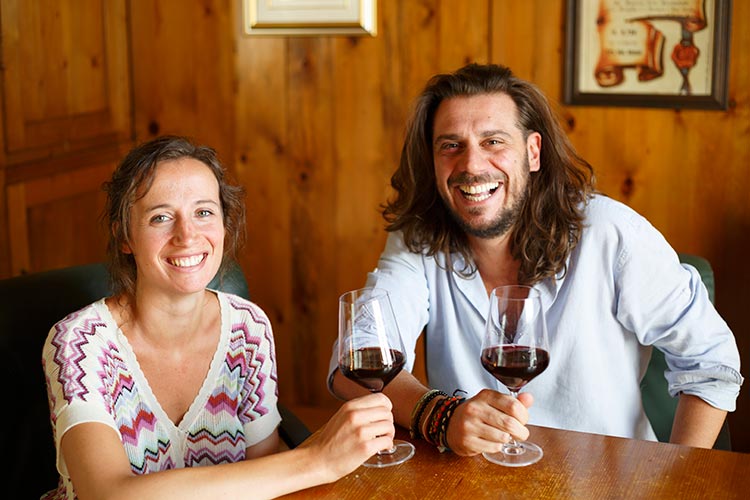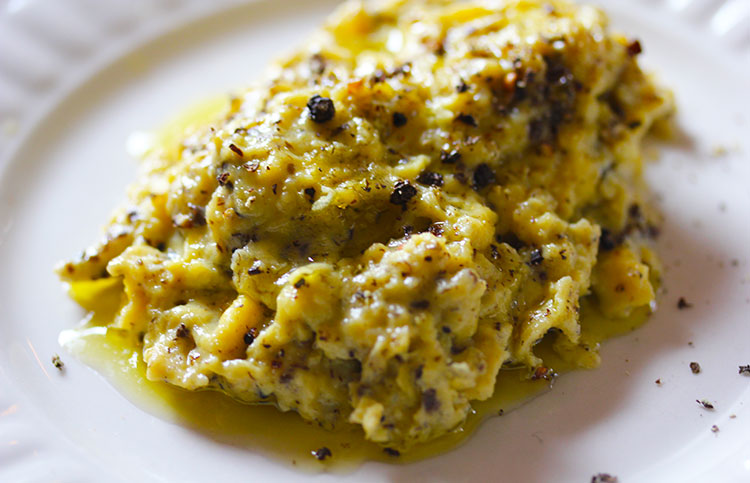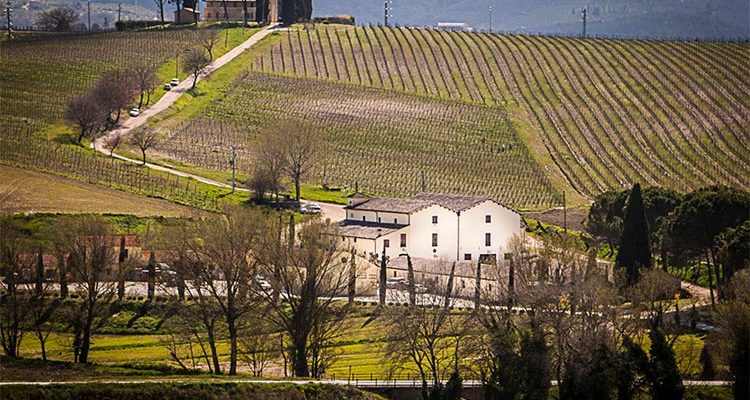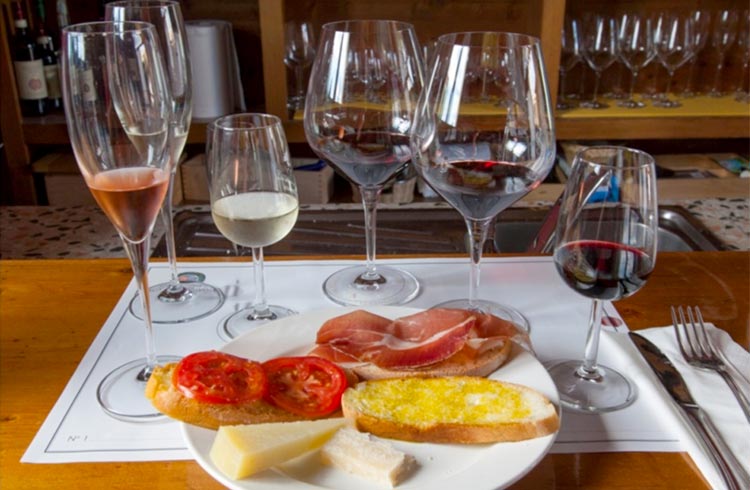Upon receiving the itinerary for our wine tour of Montefalco, the following entry immediately jumps out: 12:00 – Visit, tasting, and light lunch at winery Scacciadiavoli. Light lunch? In Umbria? Though my skepticism runs rampant, I’m intrigued to discover what might await us. In anticipation, we breakfast in traditional Italian fashion – simply whole-milk cappuccino.
Greeting us when we arrive at the winery is Liù, a member of the fourth-generation Pambuffetti family that manages Scacciadiavoli, which literally means “cast out the devils.” (It takes its name from a 19th century exorcist who lived nearby and was known to use the local wines in his rituals.) She’s clad in what we’ll eventually learn is her uniform of tee-shirt, jeans and cons, the anthesis of Italian glamour, but offers us a smile that could light up any room from Montefalco to Milan.
Before lunch, we take a quick tour of the facility, the oldest in the region, constructed in 1884 by Ugo Boncompagni-Ludovisi, the Prince of Piombino. Back then it was cutting-edge, using the hillside for natural coolness and gravity-based techniques to transfer mass quantities of wine from the top floors into the cellar. Eventually, after the fall of the fascist party post WWII, Liu’s great-grandfather acquired the property in 1954.

Rounding out our lunch party is Liù’s cousin Iacopo, another fourth-generation Pambuffetti vintner. The prototypical rapscallion, his scraggly appearance and staccato mannerisms seem to jump from the pages of legendary fiction, somewhere on the spectrum between Mercutio and Falstaff. (Days later, we’d see him holding court from a corner table of a local bar, more in his element than at the winery, and all seemed right with the world.)
“Here’s just a little something,” says Liù, as we approach the elegantly-set table, pointing casually towards some antipasti. Plates of lustrous salumi, a variety of aged cheese, several different hues of what turns out to be amazingly aromatic and diverse honey from a farmer down the road tempt us. A light lunch, perhaps?
“After that,” she continues, “we’ll be having scrambled eggs with truffles, followed by risotto made with our Sagrantino wine, and lastly a kind of roast beef, with truffles too, and some vegetables. Ok?”
Or not.
“No dessert?” I counter.
Just kidding. I don’t say that. We’ll have dessert too, of course. But Liù doesn’t tell us about it at the beginning.
Scacciadiavoli, it turns out, has a chef on staff, and we enjoy one of the finest meals of our entire trip, better in my opinion, than what we’re served at some of Montefalco’s top-rated restaurants. The brilliant wines of the estate – all 9 that we taste with lunch – don’t hurt matters.
“The summer truffles are not as aromatic as the winter ones,” Liù tells us while savoring the first dish, a simple egg scramble laced with a portion of tartufo that would easily run $40 stateside. Though I lack the cash flow to build true expertise on the glorious tubers, their aromatics would not have come under question from my side of the table. And even if we would find it odd to have eggs for lunch — a ill-founded worry of Liù and Iacopo, because we’re American — we’d make an exception for something this savory and succulent. Of particular note from a pairing standpoint is Scacciadiavoli’s Montefalco Bianco, which in this case is rounded out by 25% Chardonnay, a variety not too many local producers include. The international grape provides a touch of heft and creaminess, perfect to match the eggs.

Lest worry creep into the reader’s mind, upon reviewing the menu, that this meal is lacking in pork, when our risotto arrives, it features little flecks of what appears to be salty, crunchy prosciutto. And while the rich red wine sauce is made from the fabled Sagrantino di Montefalco, we match the rice to the lighter, fresher everyday red of the region, Montefalco Rosso. Made with mostly Sangiovese and just a small amount of Sagrantino, it’s both elegant and rustic, versatile and firm. A great buy for around $15.
Thinly-sliced beef cutlets arrive next, with yet more truffles, thankyouverymuch. As with many Umbrian meals, locating the promised vegetables proves difficult, but the dish is nonetheless delicious. Throughout our trip, I’m amazed by the tenderness of the ubiquitous local beef, even when cooked fully through, as here. It’s the first of many, many pairings we’ll encounter of cow meat with Sagrantino – the local preference – favored for the obvious protein-tannin interplay. But Scacciadiavoli’s DOCG wines in particular stand out as some of the very finest in the region, clean and pure, classic expressions of the grape. The 2008 vintage is especially brilliant on this day, nicely matured and showing lovely notes of rich cherry, anise, tobacco and cocoa.
Closing out the meal, our first chance to try Sagrantino di Montefalco passito – the traditional sweeter rendition of Sagrantino made from air-dried grapes – is a lightning bolt moment. Though honeyed on entry, showcasing dark cherry, clove and touches of earth, freshness and tannic bitterness cleanse the palate at the finish, similar to how the finest Rieslings flow (though obviously very different in flavor). Sciacciadiavoli’s is particularly light on it’s feet, helping to re-energize after a hearty meal. We pair it with a fabulous plum crostada, the fruit showcasing a brilliant acidity that belies every preconceived notion of the oft-maligned fruit.
Stuffed to the gills, and certainly feeling the effects of good wine and jetlag, I painfully realize that we still have more wineries to visit this day. It’s at this very moment that Iacopo chooses to look across the table intently at me and ask: “Grappa?”


